An in-depth comparison to guide Adrenaline Junkies and Aspiring Enthusiasts in their quest for the perfect entry-level sports motorcycle
Bikes Overview
In the realm of entry-level sports bikes, the KTM 200 Duke and Yamaha MT 15 stand out as compelling options for Adrenaline Junkies and Aspiring Enthusiasts. The KTM 200 Duke, with its aggressive styling and muscular design, exudes a raw and sporty character. Its split-trellis frame and exposed engine underscore its performance-focused DNA, appealing to riders who crave an unadulterated riding experience.
On the other hand, the Yamaha MT 15 adopts a more sleek and modern design language. Its sharp lines, compact proportions, and distinctive LED lighting create a striking visual presence. The MT 15’s Deltabox frame hints at its sporty intentions while maintaining a balance between agility and stability.
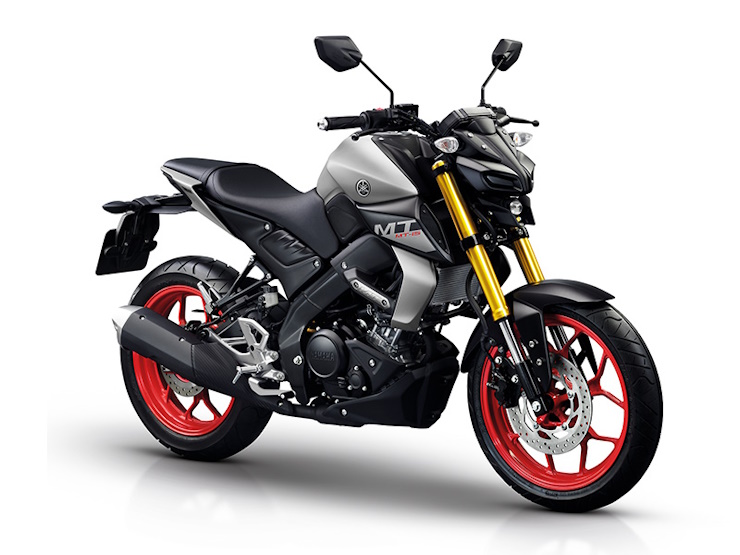
Both bikes aim to provide an accessible entry point into the world of sports motorcycles, offering a blend of performance, style, and affordability. They cater to riders who seek the thrill of a sports bike without the intimidating power or hefty price tag of larger-displacement models. As we delve deeper into their specifications and features, we’ll uncover which bike emerges as the ideal choice for adrenaline-seeking enthusiasts.
Engine and Performance Comparison
| Attribute | KTM 200 Duke | Yamaha MT 15 |
| Engine Type | Single Cylinder, Liquid Cooled, DOHC, FI Engine | Liquid cooled, 4-stroke, SOHC, 4-valve |
| Displacement | 200 cc | 155 cc |
| Peak Power | 25 PS @ 10,000 rpm | 18.4 PS @ 10000 rpm |
| Max Torque | 19.2 Nm @ 8000 rpm | 14.1 Nm @ 7500 rpm |
| Fuel Supply | Fuel Injection | Fuel Injection |
| Cooling System | Liquid Cooled | Liquid Cooled |
The KTM 200 Duke boasts a larger 200cc single-cylinder engine, delivering a substantial 25 PS of power at 10,000 rpm and 19.2 Nm of torque at 8,000 rpm. Its liquid-cooled, DOHC configuration ensures efficient heat dissipation and precise valve control.
In contrast, the Yamaha MT 15 is powered by a smaller 155cc liquid-cooled, SOHC engine. It generates a respectable 18.4 PS at 10,000 rpm and 14.1 Nm of torque at 7,500 rpm. While less powerful than the Duke, the MT 15’s engine is known for its smooth and linear power delivery.
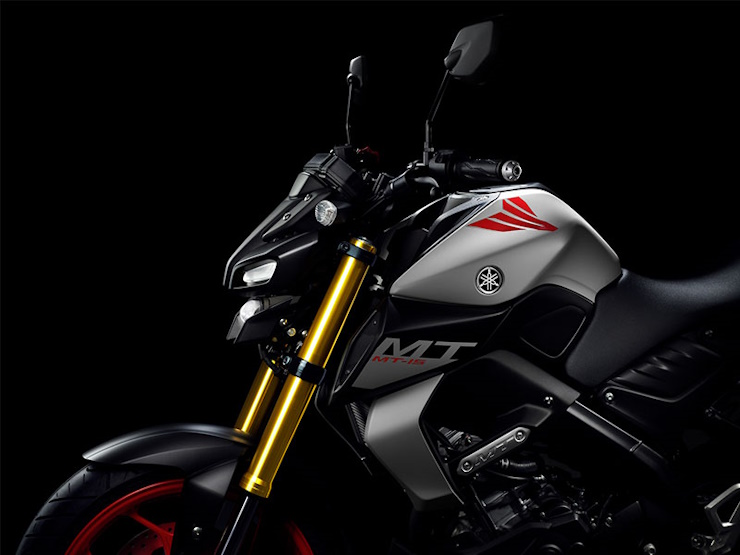
Both bikes employ fuel injection systems for optimal fueling and crisp throttle response. The KTM’s larger displacement provides an advantage in outright performance, making it the choice for riders prioritizing raw acceleration and top-end power.
Handling and Braking Comparison
| Attribute | KTM 200 Duke | Yamaha MT 15 |
| Frame | Split-Trellis frame (Tubular) | Deltabox |
| Suspension Front | WP APEX USD forks, 43mm diameter | Telescopic upside down Front Fork, 37 mm |
| Suspension Rear | WP APEX Monoshock, 10 step adjustable | Linked-type Monocross suspension |
| Front Brake Diameter | 300 mm | 282 mm |
| Kerb Weight | 159 kg | 141 kg, 139 kg |
The KTM 200 Duke’s split-trellis frame provides exceptional rigidity and precise handling. Its WP APEX USD front forks (43mm) and WP APEX monoshock rear suspension offer superior damping and adjustability, enabling riders to fine-tune the setup for their riding style.
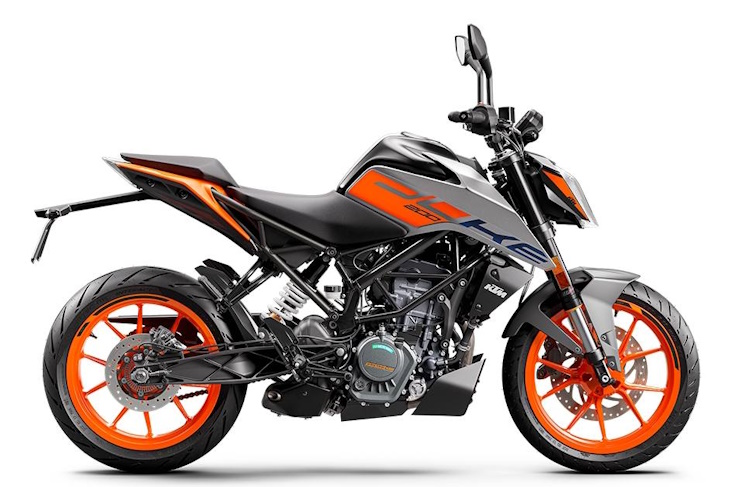
The Yamaha MT 15 utilizes a Deltabox frame, known for its balance between agility and stability. It features telescopic upside-down front forks (37mm) and a linked-type Monocross rear suspension, delivering a sporty yet comfortable ride.
Both bikes employ disc brakes, with the KTM sporting a larger 300mm front rotor compared to the MT 15’s 282mm unit. The MT 15 has a significant weight advantage, with a kerb weight of around 140 kg, enhancing its agility and maneuverability. The KTM’s higher weight of 159 kg is offset by its superior suspension components, ensuring confident handling in demanding riding scenarios.
Features and Technology Comparison
| Attribute | KTM 200 Duke | Yamaha MT 15 |
| Headlight | LED | LED |
| Tail Light | LED | LED |
| ABS | Dual Channel | Single Channel |
| Display | LCD Display | Digital |
Both the KTM 200 Duke and Yamaha MT 15 feature LED headlights and tail lights, enhancing visibility and adding a modern touch. The KTM offers dual-channel ABS, providing enhanced braking safety in all conditions. In contrast, the MT 15 comes with single-channel ABS, which may not offer the same level of braking control.
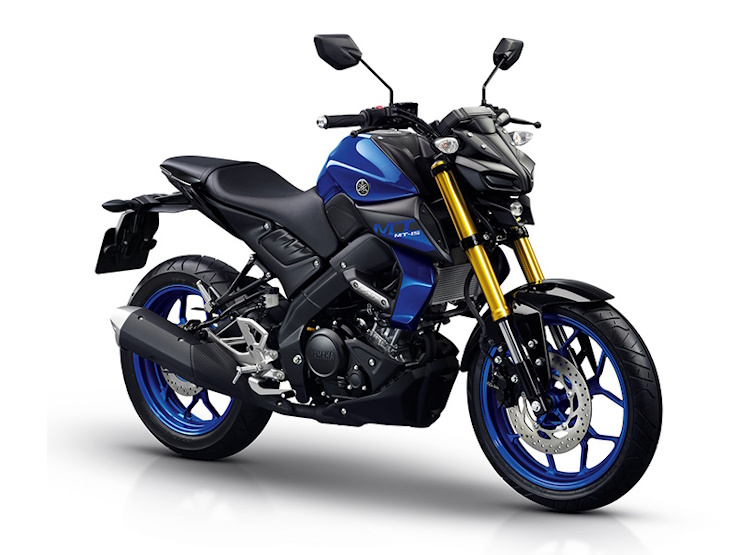
The KTM boasts an LCD display, providing clear and comprehensive ride information. It also includes daytime running lights (DRLs) for improved daytime visibility. The MT 15 features a digital display, offering essential ride data in a compact and easy-to-read format.
Ergonomics and Comfort Comparison
| Attribute | KTM 200 Duke | Yamaha MT 15 |
| Seat Type | Split | Split |
| Saddle Height | 822 mm | 810 mm |
Both the KTM 200 Duke and Yamaha MT 15 feature split seats, allowing riders to find a comfortable riding position. The KTM’s saddle height of 822 mm is slightly taller than the MT 15’s 810 mm, which may be more accommodating for taller riders.
The KTM’s ergonomics are designed for a sporty and aggressive riding posture, with slightly rear-set footpegs and a low handlebar position. This setup may be more demanding for long rides but provides excellent control during spirited riding.
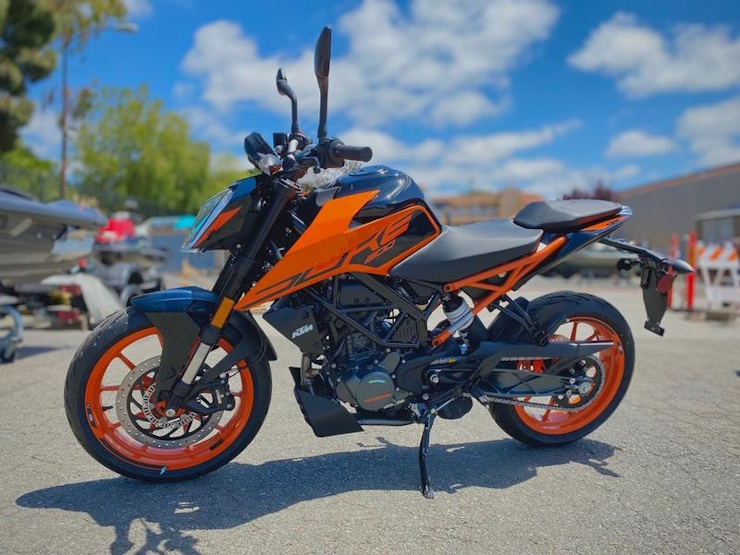
The MT 15’s ergonomics strike a balance between sportiness and comfort. Its slightly more upright riding position and lower seat height make it more accessible for shorter riders and those prioritizing comfort over outright performance.
Styling and Visual Appeal Comparison
The KTM 200 Duke’s styling is aggressive and edgy, with sharp lines and angular bodywork. Its exposed trellis frame and muscular fuel tank create a distinctive streetfighter aesthetic. The Duke’s vibrant color options and striking graphics further enhance its visual appeal, making it stand out from the crowd.
The Yamaha MT 15, on the other hand, adopts a more sleek and modern design language. Its compact proportions, sharp lines, and minimalistic bodywork give it a purposeful and aggressive look. The MT 15’s LED lighting and stylish alloy wheels add to its premium appeal.
Both bikes feature a sporty and aerodynamic front fairing, emphasizing their performance-oriented nature. The KTM’s design may resonate more with riders who prefer a raw and aggressive appearance, while the MT 15’s styling caters to those seeking a more refined and contemporary look.
Value and Ownership Comparison
| Attribute | KTM 200 Duke | Yamaha MT 15 |
| Price Range | 196685 | 167700 – 173500 |
| Variant Names and Prices |
|
|
| Number of Variants | 1 | 3 |
The KTM 200 Duke is priced at Rs. 1,96,685 for its single variant, positioning it at the higher end of the entry-level sports bike segment. The Duke’s premium pricing reflects its superior performance, advanced suspension, and dual-channel ABS.
The Yamaha MT 15 offers more affordable options, with prices ranging from Rs. 1,67,700 to Rs. 1,73,500 across its three variants. The MT 15’s competitive pricing makes it an attractive choice for budget-conscious buyers seeking a sporty and stylish motorcycle.
Both bikes are known for their reliability and build quality, ensuring a hassle-free ownership experience. The KTM’s higher price tag may be justified for riders prioritizing performance, while the MT 15’s value proposition appeals to those seeking a balance between affordability and sporty credentials.
Conclusion
In the battle of entry-level sports bikes, the KTM 200 Duke and Yamaha MT 15 offer distinct propositions for Adrenaline Junkies and Aspiring Enthusiasts. The KTM 200 Duke emerges as the top choice for riders prioritizing raw performance, advanced suspension, and aggressive styling. Its larger engine capacity, dual-channel ABS, and premium components justify its higher price tag.
On the other hand, the Yamaha MT 15 presents a compelling package for those seeking a balance between sportiness, affordability, and everyday usability. Its sleek design, agile handling, and comfortable ergonomics make it an excellent choice for riders transitioning into the world of sports bikes.
Ultimately, the decision between the KTM 200 Duke and Yamaha MT 15 depends on the individual rider’s priorities, budget, and riding style. Both bikes offer a thrilling and rewarding entry-level sports bike experience, ensuring Adrenaline Junkies and Aspiring Enthusiasts can embark on their two-wheeled adventures with confidence and excitement.
The post KTM 200 Duke vs Yamaha MT 15: A Showdown of Entry-Level Sports Bikes first appeared on Cartoq.
Source link

